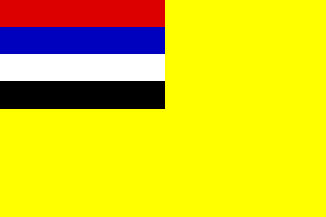Manchukuo
The Manchukuo army came into existence as a creation of the Japanese army in 1932. It was created after the Japanese takeover of Manchuria, a Chinese province in North China. The Japanese renamed the country Manchukuo and installed as its figurehead Henry Pu-Yi, who had been the last emperor of China. The movie the “Last Emperor” was about this man and included his stay in Manchukuo.
Manchukuo was intended as a separate country by the Japanese and had its own army, navy and airforce. The advantage for the Japanese of this puppet country is that it freed is own forces for other activities. The Manchukuo army was involved in fighting guerrilla forces in it territory. It remained in existence until the end of the WW2.
The army was reasonably effective, however the moral of the troops was always suspect as they usually didn’t have any attachment to the regime and less to the Japanese.
Generally they used Japanese equipment and by WW2 wore very similar uniforms. The Japanese also had other puppet armies throughout China, together with the Manchukuo forces these were estimated to be around 900,000 men by 1945.
White Russians is the name given to Russians that fought the Red Russians (Communists), after the defeat of the White Armies, individuals escaped to the west and Asia. Unfortunately for most of these individuals after escaping the USSR to China they lacked the means or were denied entry to other countries. To survive they fought as mercenaries throughout China. These troops were found in all Chinese armies and it was considered a status symbol. They crewed many of the more advanced weapon systems such as armoured trains. They also formed elite units of infantry. Due to China’s long borders with USSR it was a natural escape route for those fleeing from the Soviet regime. This provided a ready stream of new recruits.
The Japanese valued these troops for their ability at act as saboteurs behind Russian lines, in all, the Manchukuo army included 4000 of these special troops, along with regular infantry units.
Order of Battle: This is a zip file.

Manchukuo Flag
Sources:
Thanks to Taki for supplying the Manchukuo OOB, link to his Japanese web page.
Chinese Civil War Armies 1911 - 49: Men-At-Arms-Series, Osprey Military